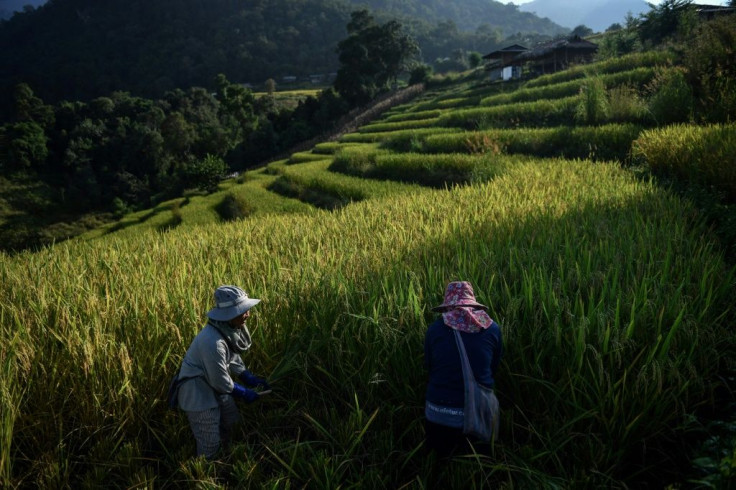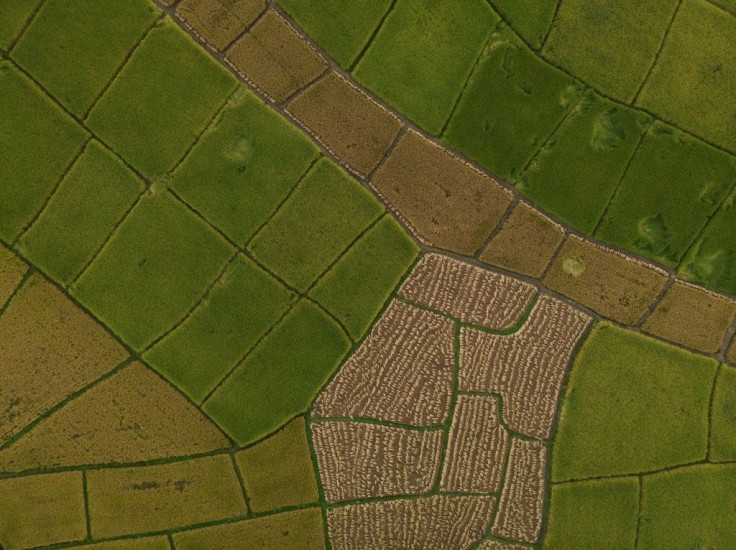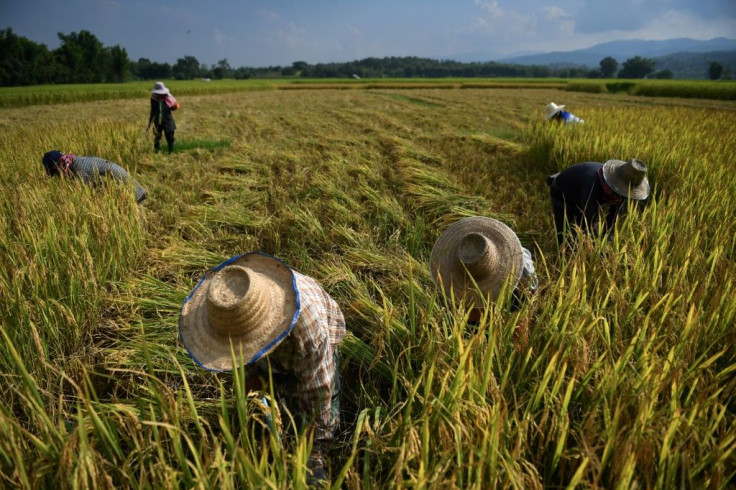Thai Rice Farmers Shun 'Big Agribusiness' And Fight Climate Change

Battling drought, debt and ailments blamed on pesticides, rice farmers in northern Thailand have turned to eco-friendly growing methods despite powerful agribusiness interests in a country that is one of the top exporters of the grain in the world.
Walking through a sea of green waist-high stalks, farmer Sunnan Somjak said his fields were "exhausted" by chemicals, his family regularly felt ill, and his profits were too low to make ends meet.
But that changed when he joined a pilot agricultural project for the SRI method, which aims to boost yields while shunning pesticides and using less water.
"Chemicals can destroy everything," the 58-year-old said, adding that the harvest in his village in Chiang Mai province has jumped 40 percent since employing the new method.
There have been health benefits too.
"It's definitely better, we don't get sick any more," he added.
SRI was invented in the 1980s in Madagascar by a French Jesuit priest, and the technique has spread globally.
It works by planting crops wider apart -- thus drawing in more nutrients and light -- and limiting the amount of water that gets into fields, which helps micro-organisms flourish to act as natural fertilisers.
In a plus for debt-laden farmers, it also uses fewer seeds, and they are encouraged to use plants and ginger roots that naturally deter insects rather than chemical alternatives -- meaning fewer expenses.
Traditional Thai rice farmers earn around 3,000 baht a month ($100) but Sunnan was able to increase his income by 20 percent after adopting the SRI method.
"I've finally got rid of my debts," he told AFP.

Rice is a staple in the diet of around three billion people globally.
But agricultural workers are locked in a vicious cycle: beset by drought and floods brought on by climate change, the farmers contribute to the disruption as their fields release methane and nitrous oxide, two greenhouse gases.
With SRI, paddy fields are not permanently flooded, which reduces methane emissions by 60 percent, according to Tristan Lecomte, founder of Pur Projet, a French company supporting the technique.

The project also helped Sunnan plant trees around his crops to reinforce the water table.
According to Lecomte, rice yields can jump from 20 percent to more than 100 compared to the traditional method.
Southeast Asia, where agriculture supports millions, is slowly embracing SRI.
The US-based Cornell University created a centre specialising in the technique in 2010 and more than two million farmers in the region -- especially from Thailand, Vietnam, Cambodia and Laos -- have been trained.
In Bac Giang province in northern Vietnam, net profits for farmers were as much as 226 percent higher after adopting the SRI method than when using traditional ones, according to Abha Mishra, who led a large project on behalf of the Asian Institute of Technology.
The Philippines, which grows rice but is also one of the world's leading importers, is also interested in this method and the Ministry of Agriculture has started training farmers.
The method is also used in parts of India, China, and Africa.
But, while there is support from NGOs, as well as some scientists and authorities, it still has a long way to go before widespread adoption.
It faces resistance domestically from agribusiness as there is no new hybrid seed or fertilizer to sell.
Industry lobbies are very active in Southeast Asia, particularly in Thailand, one of the largest users of pesticides in the world.
And they recently won a big battle over chemical use in agriculture.
Thai authorities, who had committed to ban controversial glyphosate, backtracked at the end of November, deciding that "limited" use would eventually be allowed. The use of two other herbicides has also been extended.
Lecomte says the other challenge potentially impacting the rate of adoption is the SRI method is quite complex to learn and it is labour intensive.
"You have to plant one by one and closely control the amount water," he explained, adding that the extra manual effort required means some farmers don't want to try the method, and others give up early on.
Sunnan admits that his workload is heavier but the financial and health benefits make it worth it in the end.
He added: "It is safe for our body, and the environment."
© Copyright AFP 2024. All rights reserved.





















